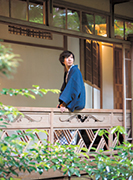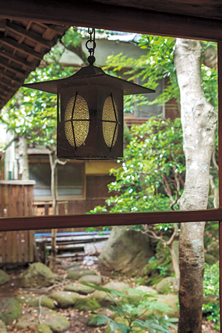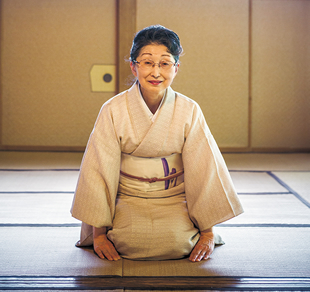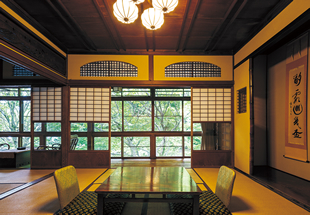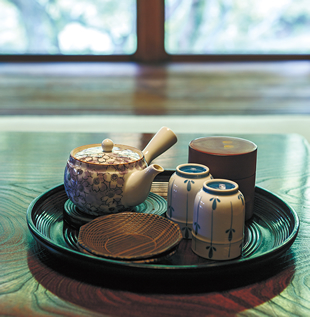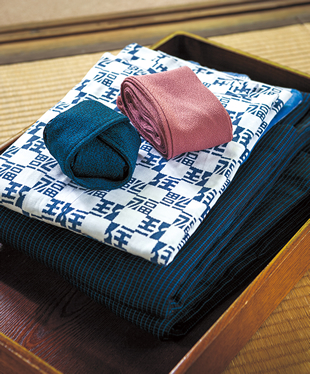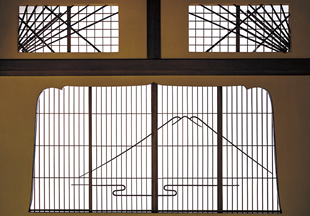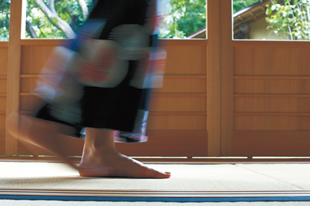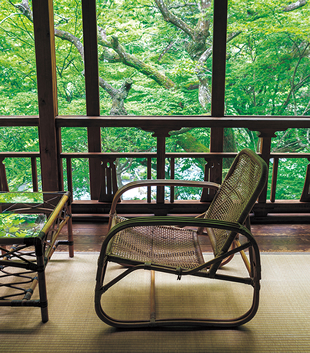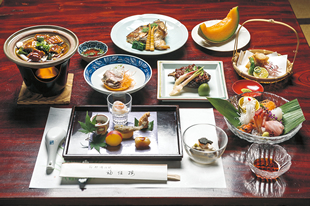niponica is a web magazine that introduces modern Japan to people all over the world.
2015 No.16

To read the e-book you need to have JavaScript enabled in your browser and a free Flash Player plug-in from Adobe Systems Inc. installed.
Japan, a Place for Relaxation and Soothing Comfort

Stay in a Ryokan and Savor an Atmosphere Like a Japanese Home
Take off your shoes, stretch out your legs on the tatami floor, and delight in the Japanese cuisine. Take a good look at the building’s natural materials, the interior design and the green of the garden. Japanese inns, called ryokan, offer you a comfortable and relaxing experience in a traditional environment.
Photos: Kawabe Akinobu Collaboration: Hakone/Tonosawa Onsen Spa Fukuzumi-ro (Ashigarashimo-gun, Kanagawa Prefecture)

Traditional architecture making full use of natural materials, green in the garden, impeccable service provided by nakai staff—these all help define the experience awaiting you at a ryokan.
If you come to Japan and want to savor the atmosphere of authentic Japan, surely nothing could be better than a night at a ryokan inn, rather than in a hotel. Dwellings built the traditional way are becoming increasingly rare in Japan, but a ryokan lets you experience all the delights of an older style of living, easily.
The most distinctive feature of a Japanese home is the fact that shoes come off upon arrival. Just inside the main door is the genkan, an entrance acting as an interface between the outside world and the home. You leave your shoes at the genkan, then step up and in, free of restricting footwear, able to unwind as you want.
In most cases, when you stay at a ryokan you can expect only one room for eating, spending time and sleeping. But do not fear that one room will not be enough—when night comes the low table and legless chairs will be moved out of the way or folded out of sight. They are replaced by futons and bedding from the closet, placed on the floor to make an instant bedroom. Traditional Japanese furniture generally offers plenty of mobility for using space efficiently.
Once in their rooms, guests usually change out of their travelling clothes and take a break, sipping tea from the tea set and eating Japanese sweets or snacks. The caffeine in the green tea makes one pleasantly alert and eases the weariness that comes after the day’s travel.
Go ahead and stretch out on the tatami mats. The smooth fibers feel nice and smell like finely chosen dried grass. Expect to be surprised: you may not be used to lounging on the floor, but it is actually quite enjoyable.
The sliding paper doors (shoji) are left open, revealing a garden, while inside the room in a small alcove (tokonoma) hangs an illustration or a work of calligraphy. Under the illustration is a flower arrangement. The tranquility adds to the visual enjoyment of the moment.
You can usually expect that a hot spring is part and parcel of a ryokan. Spend time simply soaking in the steaming water before supper, and hunger will arrive when the time is right.
After your bath, nobody will think anything of it if you amble down the corridor dressed casually in a cotton dressing gown-type yukata, worn next to your skin. At a ryokan, yukata are worn in bed instead of pajamas, and also anywhere on the ryokan grounds. You can think of the grounds as an extension of your room, rather than a formal public area.
Once back in your room from the bath, your dinner awaits, laid out while you were away. When you finish eating, staff members called nakai will clear things away without a sound, professional to the core. Then, like magic, they lay out the bedding.
Comfort and relaxation. Every part of a ryokan pursues these ideals, and all you do is let yourself be pampered. This is the charm of a stay in a ryokan.
1
The okami (proprietress) greets arriving guests with a heartfelt “Irasshaimase!” (“You are truly welcome!”)
2
A guest room for traditional living: tatami mats, shoji sliding paper doors that transmit light, a low table, a garden outside the room, and calligraphy in the tokonoma alcove (far right in photo).
3
Take your mind out of overdrive; serve yourself some tea with the tea set waiting in your room. The cares of the road fade away.
4
Take time out before dinner in the spa bath. Then enjoy the touch of a cotton yukata gown next to your skin.
5
Even though you cannot see the real Mount Fuji from here, the shoji window shades give a playful representation to entertain the eye.
6
Take off your shoes, and come in direct contact with the tatami mats, for a sensation that is actually quite relaxing. (Photo: Aflo)
7
After the bath, sit in a rattan-work chair and cool off in the whispering breeze beside a bubbling brook.
8
Dinner arrives in the room at just the right moment. A ryokan’s traditional cuisine is a work of art to be enjoyed without formality.
